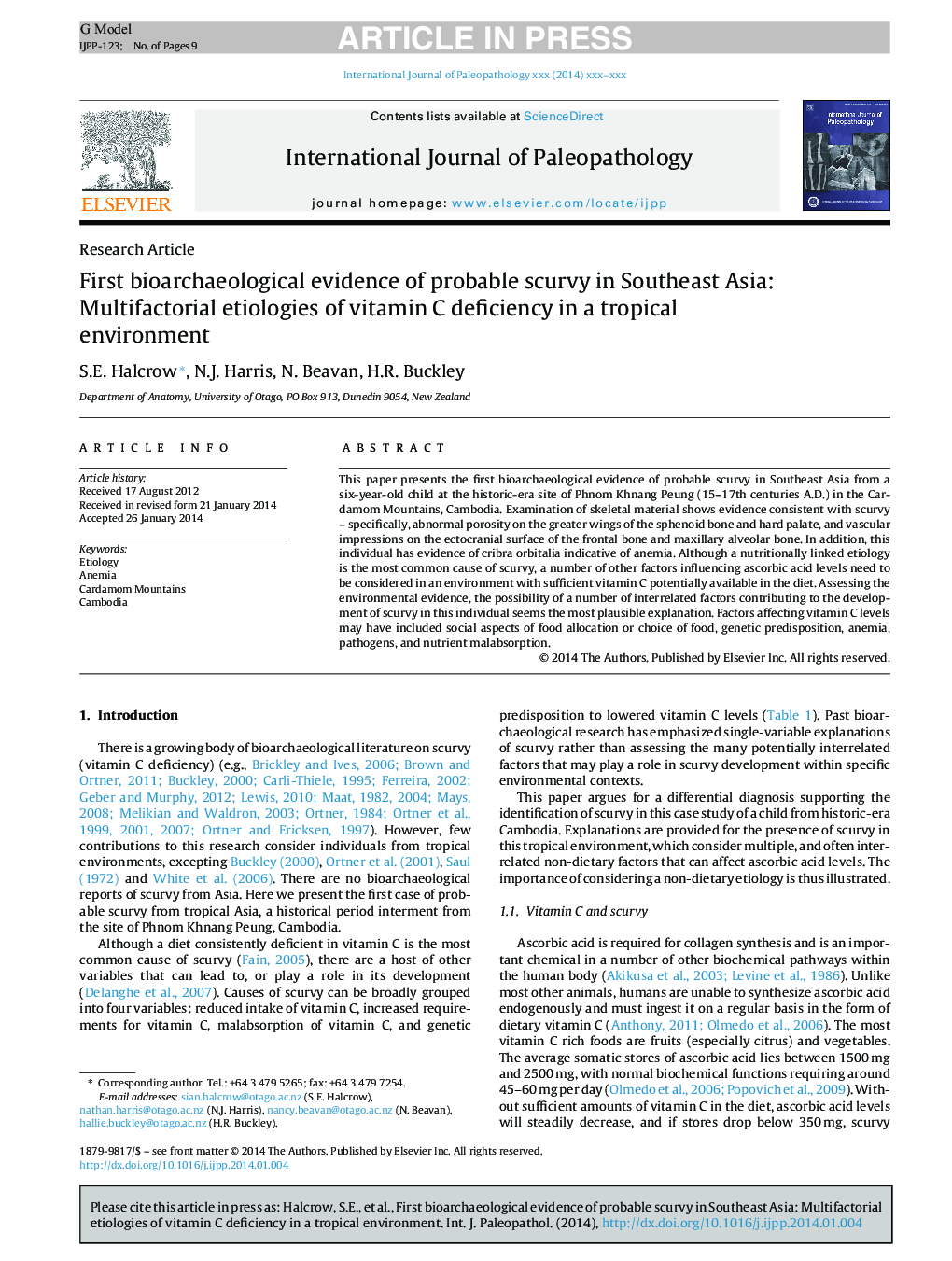| کد مقاله | کد نشریه | سال انتشار | مقاله انگلیسی | نسخه تمام متن |
|---|---|---|---|---|
| 6554873 | 1422386 | 2014 | 9 صفحه PDF | دانلود رایگان |
عنوان انگلیسی مقاله ISI
First bioarchaeological evidence of probable scurvy in Southeast Asia: Multifactorial etiologies of vitamin C deficiency in a tropical environment
دانلود مقاله + سفارش ترجمه
دانلود مقاله ISI انگلیسی
رایگان برای ایرانیان
موضوعات مرتبط
علوم زیستی و بیوفناوری
بیوشیمی، ژنتیک و زیست شناسی مولکولی
فیزیولوژی
پیش نمایش صفحه اول مقاله

چکیده انگلیسی
This paper presents the first bioarchaeological evidence of probable scurvy in Southeast Asia from a six-year-old child at the historic-era site of Phnom Khnang Peung (15-17th centuries A.D.) in the Cardamom Mountains, Cambodia. Examination of skeletal material shows evidence consistent with scurvy - specifically, abnormal porosity on the greater wings of the sphenoid bone and hard palate, and vascular impressions on the ectocranial surface of the frontal bone and maxillary alveolar bone. In addition, this individual has evidence of cribra orbitalia indicative of anemia. Although a nutritionally linked etiology is the most common cause of scurvy, a number of other factors influencing ascorbic acid levels need to be considered in an environment with sufficient vitamin C potentially available in the diet. Assessing the environmental evidence, the possibility of a number of interrelated factors contributing to the development of scurvy in this individual seems the most plausible explanation. Factors affecting vitamin C levels may have included social aspects of food allocation or choice of food, genetic predisposition, anemia, pathogens, and nutrient malabsorption.
ناشر
Database: Elsevier - ScienceDirect (ساینس دایرکت)
Journal: International Journal of Paleopathology - Volume 5, June 2014, Pages 63-71
Journal: International Journal of Paleopathology - Volume 5, June 2014, Pages 63-71
نویسندگان
S.E. Halcrow, N.J. Harris, N. Beavan, H.R. Buckley,